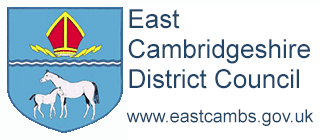When you sell or dispose of something you claimed capital allowances (external link) on, include the value in your calculations for the accounting period you sell it in.
You do not need to do this if you give it to a charity or community amateur sports club.
Dispose of an asset
You dispose of an asset if you:
- sell it
- give it away as a gift or transferring it to someone else
- swap it for something else
- get compensation for it, like an insurance payout if it has been lost or destroyed
- keep it, but no longer use it for your business
- start to use it outside your business
Work out the value
The value is usually how much you sold it for. Use the market value (the amount you would expect to sell it for) if you:
- did not sell it, for example you gave it away or you kept it but stopped using it for your business
- sold it for less than it was worth to someone connected to you
If a connected person or a company connected with yours sold it to you for less than it cost them, the value is how much it cost them.
Connected people
Connected people include your:
- husband, wife or civil partner and their relatives
- relatives and their husbands, wives or civil partners
- business partners and their husbands, wives, civil partners and relatives
Your company is connected with another company if you:
- control them both
- are connected with a person who controls the other company
- are part of a group that controls both companies
If you originally claimed 100% of the item
Add the full value to your profits in your tax return (external link) if both of the following apply:
- you originally claimed 100% of the item under annual investment allowance (external link) or first year allowances (external link)
- you have nothing in the pool your item qualifies for (external link)
This is known as a balancing charge.
If you have a balance in the pool your item qualifies for
Deduct the full value from that pool if you originally claimed 100% of the item and you have a balance in the pool your item qualifies for (external link).
Add the difference to your profits in your tax return (external link) if the value of the item is more than the amount in your pool. This is a balancing charge.
If there is a balance left in your pool, you can claim writing down allowances (external link) on it.
If you originally used writing down allowances
Deduct the value from the pool (external link) you originally added the item to if you used writing down allowances when you bought it.
For items in single asset pools you can claim (external link) any amount that is left as a capital allowance. This is known as a balancing allowance.
If the value you deduct is more than the balance in the pool, add the difference to your profit. This is a balancing charge.
You can only get a balancing allowance in your main or special rate pool when you close your business. You can get a balancing charge in any pool in any year.
If you sell it for more than it cost you
You can only deduct the original cost of the item even if you sell it for more.
If a connected person sold it to you for less than it cost them, deduct either how much you sell it for or how much it cost them, whichever is smaller.
Add the difference to your profits in your tax return (external link) if the value of the item is more than the amount in your pool. This is a balancing charge.
If you close your business
In the year you close your business, enter a balancing charge or a balancing allowance on your tax return (external link) instead of claiming capital allowances.
